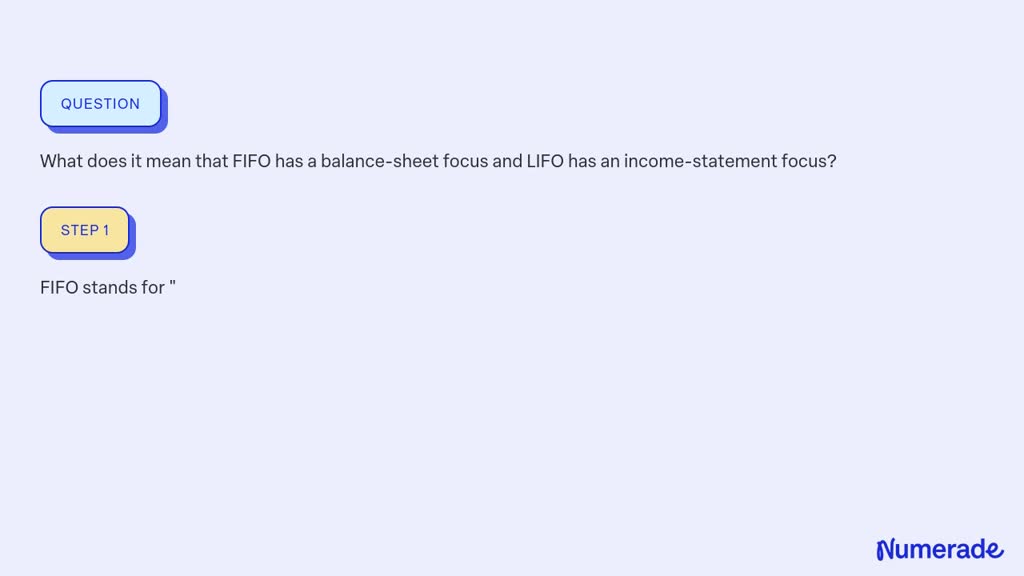
That is, LIFO would produce the highest gross margin and the highest ending inventory cost. The average cost fell between these two extremes for all three accounts. This is because the acquisition price of the inventory consistently rises during the year, from $4.10 to $4.70. The lowest gross margin and ending inventory and highest cost of goods sold resulted when LIFO was used. As shown in the table below, the highest gross margin and ending inventory, as well as the lowest cost of goods sold, resulted when FIFO was used. Understanding the important role that inventory plays in finances is critical.
LIFO and FIFO: Taxes
- In other words, the older inventory, which was cheaper, would be sold later.
- The accounting records showed the following gross profit data for November and December.
- All pros and cons listed below assume the company is operating in an inflationary period of rising prices.
- The Sterling example computes inventory valuation for a retailer, and this accounting process also applies to manufacturers and wholesalers (distributors).
The Financial Accounting Standards Board (FASB) is the source for the GAAP standards. This means that if inventory values were to plummet, their valuations would represent the market value (or replacement cost) instead of LIFO, FIFO, or average cost. Companies with perishable goods or items heavily subject to obsolescence are more likely to use LIFO. Logistically, that grocery store is more likely to try to sell slightly older bananas as opposed to the most recently delivered. Should the company sell the most recent perishable good it receives, the oldest inventory items will likely go bad. The company made inventory purchases each month for Q1 for a total of 3,000 units.

What Is the Impact of LIFO on Financial Statements?
Of all the assets on a firm’s balance sheet, it is likely that inventory is the largest asset category in terms of value. LIFO seldom gives a good representation of the replacement cost for the inventory units, which is one of its drawbacks. In addition, it may not correspond to the actual physical flow of the goods. Managers must have a way to account for the different prices assigned to inventory at the end of each accounting period. FIFO is the most popular inventory method because it’s unrestricted for U.S.- or international-based companies and it increases the value of purchased inventory. It’s important to know how the LIFO vs. FIFO methods work to choose the best inventory management techniques for your business and maximize tax benefits.
FIFO vs. LIFO Inventory Valuation
Again, these are short-term differences that are eliminated when all of the shirts are sold. The Sterling example computes inventory valuation for a retailer, and this accounting process also applies to manufacturers and wholesalers (distributors). The costs included for manufacturers, however, are different from the costs for retailers and wholesalers. You also need to understand the regulatory and tax issues related to inventory valuation.FIFO is the more straightforward method to use, and most businesses stick with the FIFO method.
The company’s tax liability will be lower due to lower net income and higher cost of goods sold. The value of inventory shown on the balance sheet will be lower since $2.35 rather than $2.50 is used to calculate the value of ending inventory. Net income will be higher, using the FIFO method of accounting inventory, and the cost of goods sold will be lower since the lower price will be used to calculate that figure. The company’s tax liability will be higher due to higher net income and lower cost of goods sold.
When calculating inventory and Cost of Goods Sold using LIFO, you use the price of the newest goods in your calculations. Let’s say on January 1st of the new year, Lee wants to calculate the cost of goods sold in the previous year. It means that the cost of the items which were most recently purchased is tax filing options the cost that will be used for valuation purposes. Many accountants argue, however, that LIFO provides a more realistic income figure. The reason is that it eliminates a substantial portion of inventory profit. These results are logical, given the relationship between ending inventories and gross margin.
FIFO leaves the newer, more expensive inventory in a rising-price environment, on the balance sheet. As a result, FIFO can increase net income because inventory that might be several years old–which was acquired for a lower cost–is used to value COGS. However, the higher net income means the company would have a higher tax liability. Some accountants in the U.S. advise using the LIFO method for your inventory accounting when you have stock with rising costs.
Shawn Company had 100 units in beginning inventory at a total cost of $10,000. Although using the LIFO method will cut into his profit, it also means that Lee will get a tax break. The 220 lamps Lee has not yet sold would still be considered inventory, and their value would be based on the prices not yet used in the calculation. FIFO is mostly recommended for businesses that deal in perishable products.